Easy Tutorials for DIY Sewing Projects
Are you ready to unleash your inner creativity with some fun and rewarding DIY sewing projects? Whether you’re a complete novice or someone looking to brush up on your skills, this article is designed just for you! Sewing can be a delightful and therapeutic hobby that not only allows you to express your style but also results in beautiful, handmade items you can cherish or gift to loved ones.
In this guide, we will explore a variety of simple sewing tutorials that cater to all skill levels. You’ll find everything from essential tools and techniques to fun projects that will help you practice your newfound skills. Imagine the satisfaction of creating your own tote bag or pillowcase—there's nothing quite like it!
Before we dive into the projects, let’s take a moment to understand the basics of sewing. It’s crucial to have a solid foundation, and knowing the right tools and materials will make your sewing journey smoother and more enjoyable. Think of it as building a house; without a strong base, the structure won’t hold up!
So, grab your sewing machine, dust off those fabric scraps, and let’s get started on this exciting journey of DIY sewing. You’ll be amazed at what you can create with just a little guidance and a lot of enthusiasm!
Before you sew your first stitch, it’s essential to gather the right tools and materials. Here’s a quick rundown of what you’ll need:
- Sewing Machine: A reliable machine is your best friend. It doesn’t have to be fancy; just make sure it can handle basic stitches.
- Fabric: Start with cotton or linen as they are easy to work with and forgiving for beginners.
- Thread: Choose a thread that matches your fabric—this small detail can make a significant difference!
- Scissors: Invest in a good pair of fabric scissors; they will make cutting a breeze.
- Measuring Tools: A measuring tape and a ruler are essential for accuracy.
With these tools in hand, you’re ready to embark on your sewing adventure. Remember, every expert was once a beginner. So, don’t be afraid to make mistakes; they are part of the learning process!
Now that you have your tools, let’s familiarize ourselves with some fundamental sewing techniques. Understanding these basics will give you the confidence to tackle any project. You’ll learn about stitches, hems, and seams, which are the building blocks of all sewing projects.
Stitches are the heart of sewing. They hold your fabric together and can add decorative elements to your projects. Here are a few types of stitches you should know:
- Straight Stitch: The most common stitch, perfect for seams.
- Zigzag Stitch: Great for finishing edges and preventing fraying.
- Decorative Stitches: Use these to add flair to your projects, like embroidery or quilting patterns.
Understanding when to use hand stitching versus machine stitching is essential. Hand stitching is perfect for delicate fabrics or small repairs, while machine stitching is faster and more efficient for larger projects. Think of it like choosing between a bicycle and a car—each has its place depending on the journey you’re embarking on!
As a beginner, you're bound to make some mistakes. But fear not! Here are some common pitfalls and how to avoid them:
- Skipping Stitches: Ensure your needle is appropriate for your fabric type.
- Uneven Seams: Use a guide on your sewing machine to maintain consistent seam allowances.
- Fabric Bunching: Always support your fabric as you sew to prevent it from shifting.
By being aware of these common issues, you can troubleshoot and correct your work, making your sewing experience much more enjoyable!
Now that you've got the basics down, let’s dive into some simple sewing projects that are perfect for beginners. These projects will help you practice your skills while creating useful items:
- Tote Bag: A practical project that’s both stylish and functional.
- Pillowcase: A great way to practice your stitching while sprucing up your home.
- Simple Skirt: An excellent introduction to garment making.
Each of these projects will not only boost your confidence but also provide you with tangible results that you can be proud of!
Q: What is the best sewing machine for beginners?
A: Look for a machine that is user-friendly, has basic stitches, and fits your budget. Brands like Brother and Singer offer great options.
Q: How do I choose the right fabric?
A: Start with cotton or linen for beginners. As you gain experience, you can experiment with different fabrics like knits and silks.
Q: Can I sew without a sewing machine?
A: Absolutely! Hand sewing is a valuable skill, and many projects can be completed with just a needle and thread.
Q: How can I improve my sewing skills?
A: Practice regularly, take classes, and don’t hesitate to seek help from online tutorials or sewing communities!
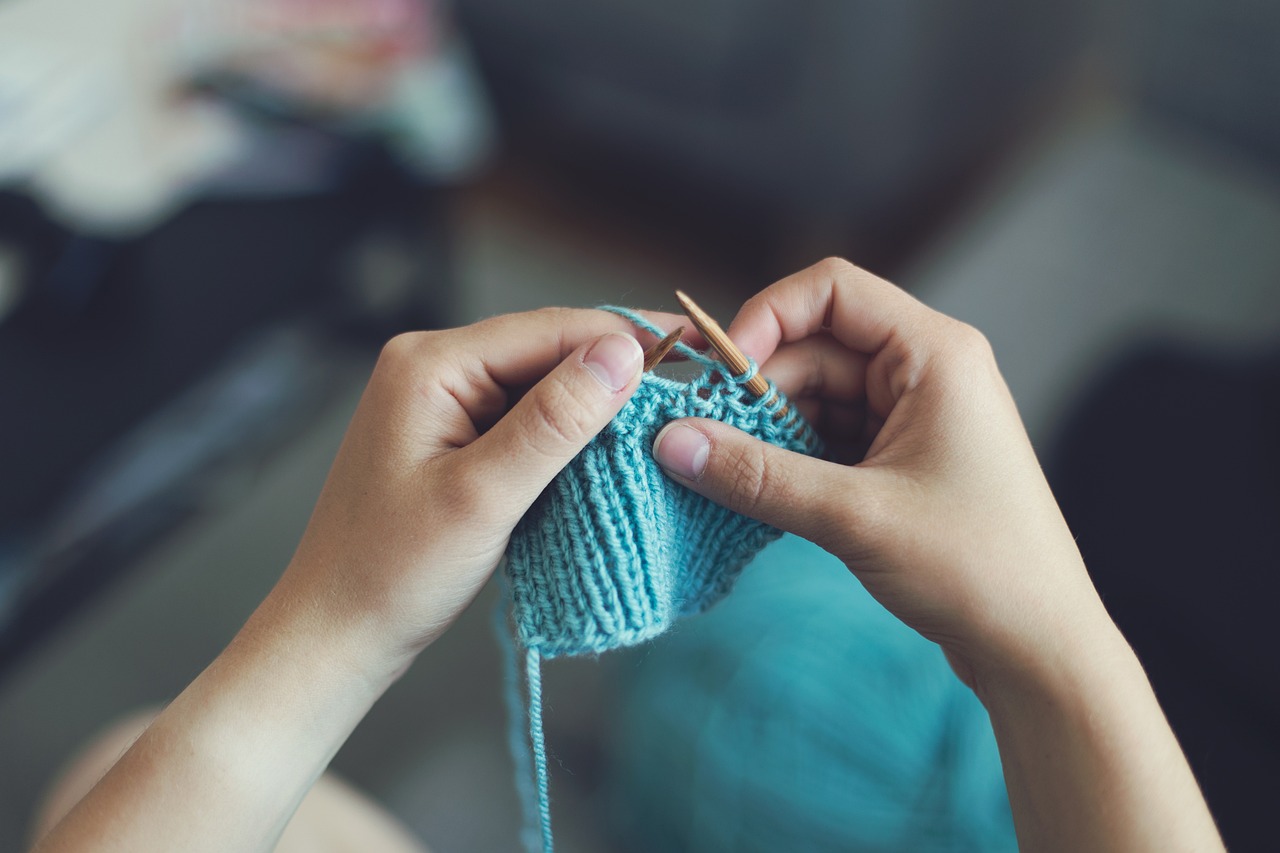
Getting Started with Sewing
So, you’re ready to dive into the fabulous world of sewing! Whether you’re looking to create stunning garments or unique home decor, getting started with sewing is all about having the right tools and materials at your fingertips. Think of it as laying the foundation for a beautiful house; without a solid base, everything else will crumble. Let’s explore what you’ll need to kick off your sewing journey!
First up, you’ll need a reliable sewing machine. This trusty companion will be your best friend as you stitch your way to creativity. If you’re just starting out, consider a machine that’s user-friendly and has basic features like adjustable stitch lengths and built-in stitches. Brands like Brother and Singer offer great options that won’t break the bank.
Next, let’s talk about fabric. Choosing the right fabric is crucial, as it can make or break your project. For beginners, cotton is a fantastic choice because it’s easy to work with and comes in a plethora of fun prints. As you grow more confident, you can experiment with different materials like linen, jersey, or even denim! Just remember, each fabric has its own quirks and characteristics, so take some time to learn about them.
Now, what about notions? These are the little extras that will help your sewing projects shine. Here’s a quick list of essential notions you should have on hand:
- Thread: Match the thread color to your fabric for seamless sewing.
- Scissors: Invest in a good pair of fabric scissors to ensure clean cuts.
- Pins: Use these to hold your pieces together before sewing.
- Measuring Tape: Accurate measurements are key to a successful project.
- Seam Ripper: Mistakes happen; this tool will help you fix them!
Don’t forget about your workspace! Setting up a comfortable and organized area will make your sewing experience much more enjoyable. Find a well-lit spot where you can spread out your materials and keep everything you need within arm's reach. A sturdy table or desk will do wonders for your back and shoulders, allowing you to sew for hours without discomfort.
Finally, it’s important to educate yourself on the basics of sewing. There are countless resources available, from online tutorials to sewing classes at local craft stores. Don’t hesitate to ask questions or seek guidance from more experienced sewists. Remember, every expert was once a beginner!
As you gather your supplies and set up your workspace, keep in mind that sewing is not just about creating; it’s also about enjoying the process. Embrace the learning curve, and don’t be afraid to make mistakes. Each stitch you take is a step towards becoming a more skilled and confident sewist. Now, let’s get sewing!
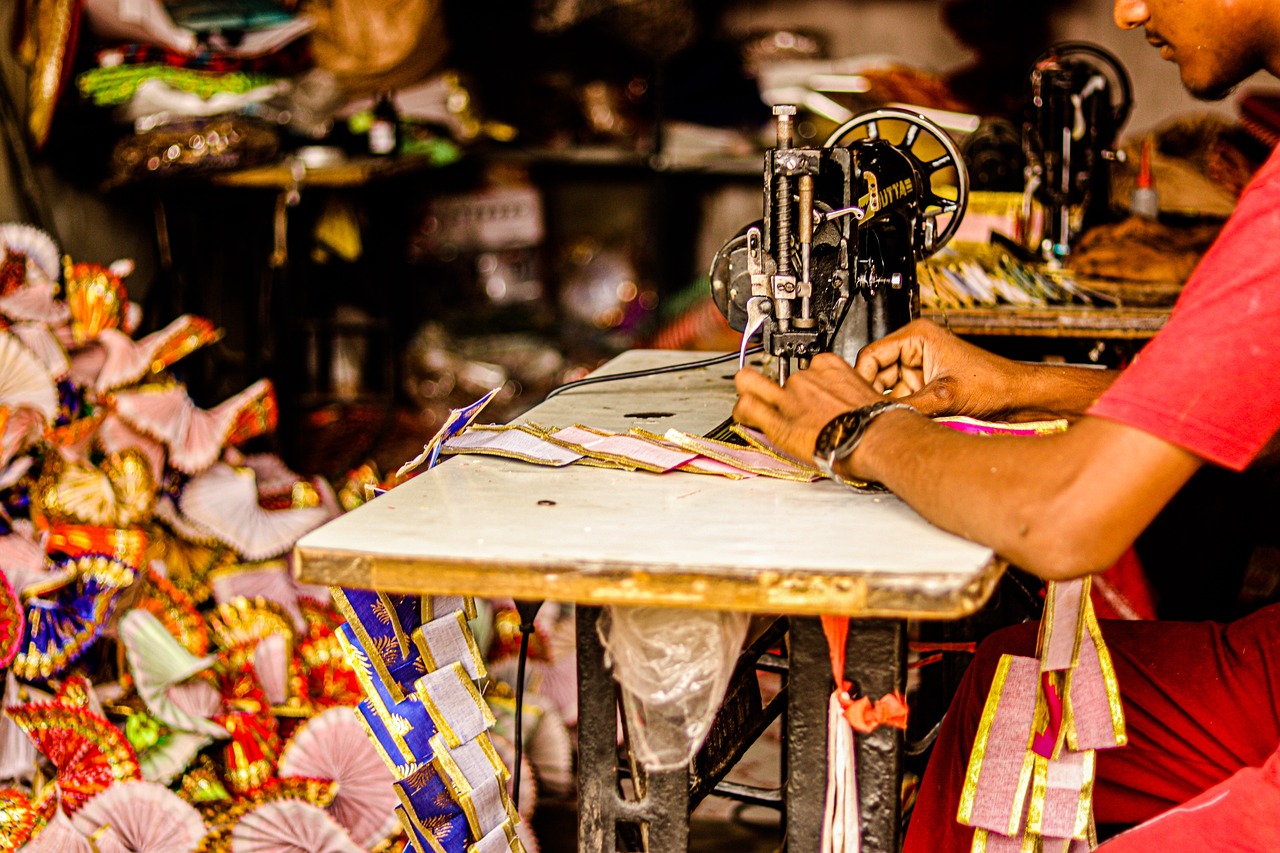
Basic Sewing Techniques
Sewing is an art form that combines creativity with practicality, and mastering is essential for anyone looking to embark on their sewing journey. Whether you’re a complete novice or someone looking to brush up on your skills, understanding these techniques will set a solid foundation for your future projects. Think of it as learning the alphabet before writing your first novel; each stitch and seam is a letter that contributes to the beautiful story you’ll create with fabric.
One of the first things you’ll want to familiarize yourself with is the different types of stitches. Stitches are the building blocks of any sewing project, and knowing how to use them effectively can make a world of difference. Here are a few essential stitches that every DIYer should know:
- Straight Stitch: This is the most common stitch and is used for basic seams.
- Zigzag Stitch: Perfect for finishing edges to prevent fraying.
- Decorative Stitches: These add flair to your projects and can be used creatively.
Understanding when to use each stitch is crucial. For example, a straight stitch is great for piecing fabric together, while a zigzag stitch is your go-to for knit fabrics. Think of stitches as tools in a toolbox; each has its unique purpose, and knowing when to pull out which one can make or break your project.
Now, let’s dive into the debate of hand stitching versus machine stitching. Hand stitching is often seen as a lost art, but it has its own charm and is perfect for small repairs or delicate fabrics. On the other hand, machine stitching is faster and ideal for larger projects. It’s like comparing a handwritten letter to an email; both serve their purpose, but they deliver different experiences. Knowing when to use each method can enhance your sewing repertoire and help you achieve the best results for your projects.
As with any skill, mistakes are part of the learning process. It’s essential to recognize common stitching errors to avoid them. Some frequent pitfalls include:
- Uneven seams: This can happen if you’re not guiding your fabric evenly through the machine.
- Skipped stitches: Often caused by a dull needle or incorrect tension settings.
- Fabric puckering: This occurs when the fabric is pulled too tightly while stitching.
By being aware of these issues, you’ll be better equipped to troubleshoot and correct them, leading to a smoother sewing experience. Remember, even the most experienced sewists make mistakes; the key is to learn from them!
In conclusion, mastering basic sewing techniques is an exciting step on your sewing journey. Each stitch you learn and every seam you sew brings you closer to creating beautiful, functional pieces. So grab your fabric, thread your needle, and get ready to unleash your creativity!
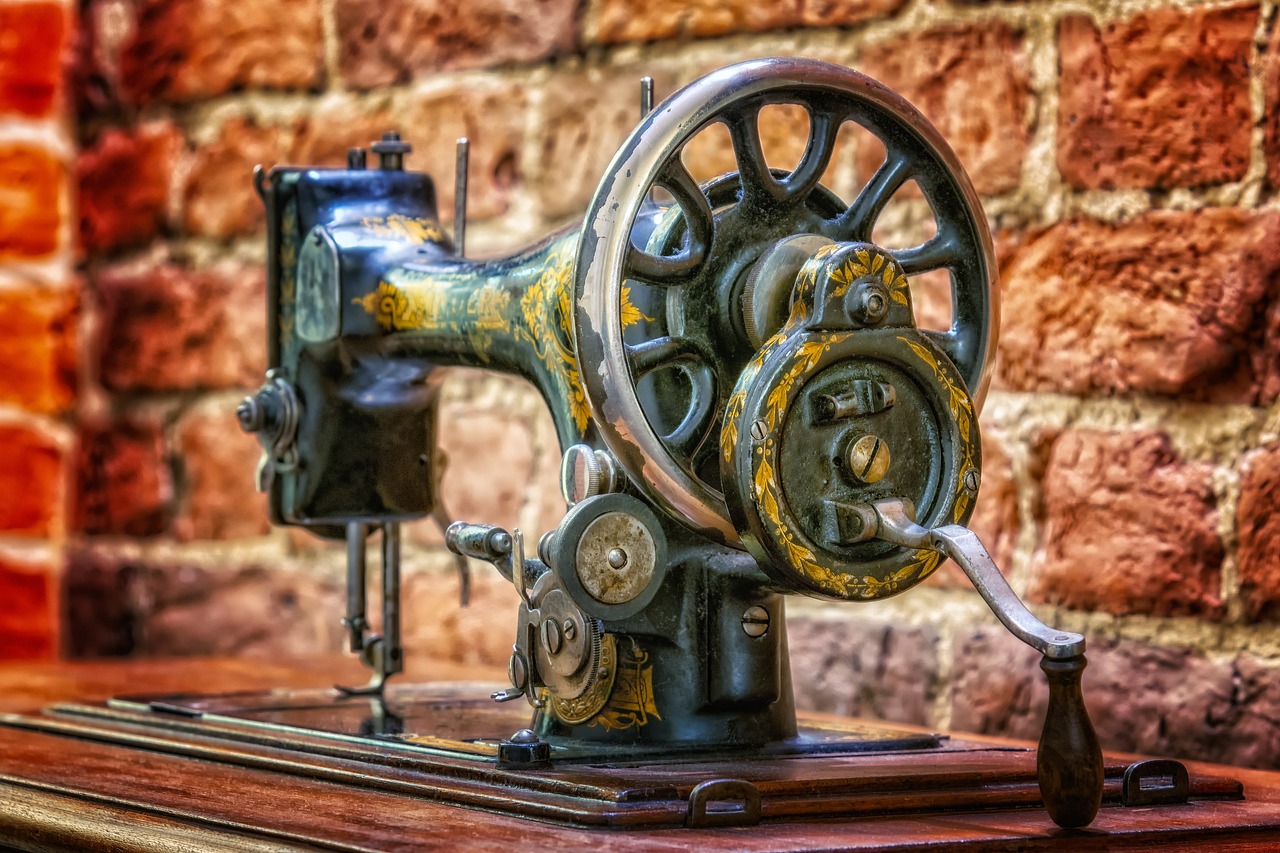
Understanding Stitches
When it comes to sewing, understanding the different types of stitches is like learning the alphabet before writing your first novel. Stitches are the very foundation of your sewing projects, and knowing how to use them effectively can transform a simple piece of fabric into a stunning creation. Let’s dive into the world of stitches and explore the essentials that every DIY enthusiast should know!
First, let’s talk about the straight stitch. This is the most basic and commonly used stitch in sewing. It’s perfect for seams and hems, providing a clean and straightforward finish. If you’re just starting out, mastering the straight stitch will give you the confidence to tackle more complex projects. Think of it as the bread and butter of sewing; without it, you’ll find yourself lost in a sea of fabric!
Next up is the zigzag stitch. This stitch is a game-changer, especially for knit fabrics or when you want to prevent fraying. The zigzag pattern allows the fabric to stretch while maintaining its shape, making it ideal for t-shirts and stretchy projects. Imagine it as the elastic band of your sewing toolkit—flexible and incredibly useful!
Now, let’s not forget about decorative stitches. These stitches add flair and personality to your projects. Whether it’s a floral pattern or a fun wave, decorative stitches can elevate your creations from ordinary to extraordinary. They’re like the icing on the cake—sweetening the deal and making your work stand out.
But wait, there’s more! It’s essential to understand when to use each type of stitch. For instance, while the straight stitch is great for seams, it’s not always the best choice for knits. Here’s a quick comparison to help you out:
| Type of Stitch | Best For | Notes |
|---|---|---|
| Straight Stitch | Seams, hems | Strong and reliable |
| Zigzag Stitch | Knit fabrics, preventing fraying | Allows for stretch |
| Decorative Stitches | Embellishments | Adds visual interest |
Understanding the differences between hand stitching and machine stitching is also crucial. Hand stitching offers precision and a personal touch, making it perfect for delicate fabrics or intricate designs. On the other hand, machine stitching is faster and more efficient for larger projects, allowing you to complete items in a fraction of the time. Think of hand stitching as crafting a handwritten letter, while machine stitching is akin to sending a quick text message—both have their place!
As you embark on your sewing journey, be aware of common stitching mistakes. Beginners often struggle with tension issues, where stitches can either be too tight or too loose. This can lead to puckering or even breakage. Another frequent error is not backstitching at the beginning and end of seams, which can cause your stitches to unravel. Remember, practice makes perfect, and every mistake is just a stepping stone to becoming a better sewist!
In summary, understanding stitches is fundamental to your sewing success. Whether you’re using straight stitches for seams, zigzag stitches for stretch, or decorative stitches for flair, each type plays a vital role in your projects. So grab your fabric, thread your machine, and let’s get sewing!
- What is the best stitch for beginners? The straight stitch is the best starting point for beginners as it is simple and versatile.
- How do I fix tension issues in my sewing? Adjust the tension dial on your sewing machine and test on scrap fabric until you achieve the desired results.
- Can I use decorative stitches on all fabrics? While decorative stitches can be used on many fabrics, it’s best to test on a scrap piece first to see how the fabric reacts.
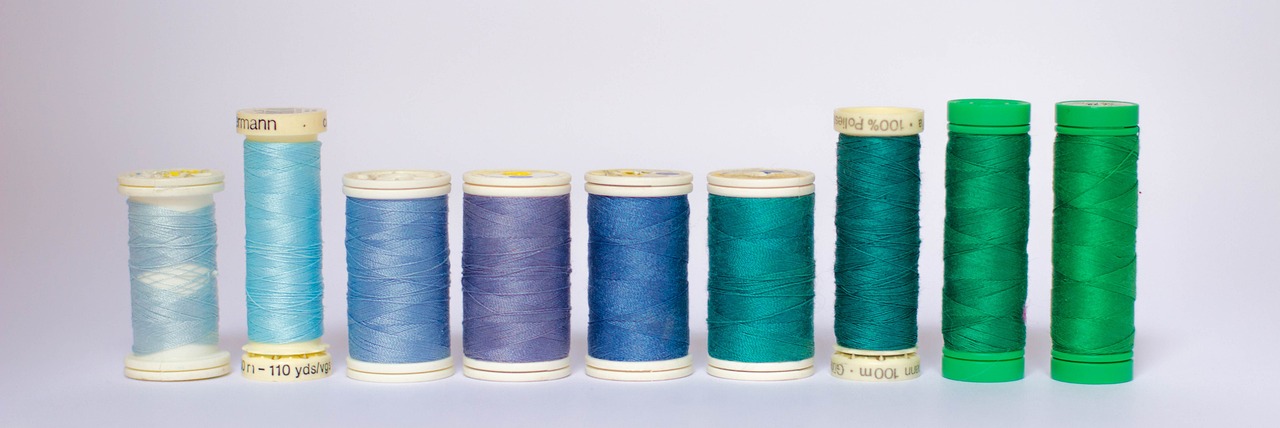
Hand Stitching vs. Machine Stitching
When it comes to sewing, one of the most common debates among enthusiasts is whether to opt for hand stitching or machine stitching. Each method has its unique advantages and specific situations where it shines, making the choice largely dependent on the project at hand and personal preferences. Imagine hand stitching as a fine art, where every stitch is a brushstroke, while machine stitching is more like a powerful printer, efficiently producing results with speed and precision.
Hand stitching allows for a level of control and detail that machine stitching sometimes cannot match. It’s perfect for delicate fabrics or intricate designs where you want to ensure every detail is just right. For instance, when working with lace or silk, hand stitching can prevent the fabric from puckering, which is a common issue with machines. Plus, there’s something incredibly satisfying about the tactile experience of needle and thread gliding through fabric, making it a meditative process for many.
On the flip side, machine stitching is a game changer when it comes to efficiency. If you’ve got a big project or multiple items to sew, a sewing machine can save you hours. Machines can handle thicker fabrics and are generally more reliable for straight seams, making them ideal for garments and larger projects. Think of it as the trusty workhorse of the sewing world, ready to tackle your toughest tasks with ease.
Here’s a quick comparison of the two methods:
| Feature | Hand Stitching | Machine Stitching |
|---|---|---|
| Control | High - allows for intricate designs | Moderate - less control over detail |
| Speed | Slow - requires more time per stitch | Fast - can sew multiple stitches quickly |
| Fabric Types | Best for delicate fabrics | Can handle thicker fabrics |
| Learning Curve | Easy to learn | Requires practice to master |
Ultimately, the choice between hand and machine stitching boils down to your project needs and personal style. If you’re working on something special, like a heirloom quilt or a custom piece, you might lean towards hand stitching for that personal touch. However, if you’re whipping up a batch of simple tote bags or a quick hem, machine stitching is likely the way to go. As you progress in your sewing journey, you might find that a combination of both techniques will serve you best, allowing you to take advantage of the strengths of each method.
As you embark on your sewing adventures, you may have some questions. Here are a few frequently asked ones:
- What is the best way to learn sewing? Start with simple projects and gradually increase complexity as you gain confidence.
- Do I need a fancy sewing machine to get started? Not at all! A basic machine is sufficient for most beginner projects.
- How can I improve my sewing skills? Practice regularly, watch tutorials, and don’t hesitate to ask for help from experienced sewists.
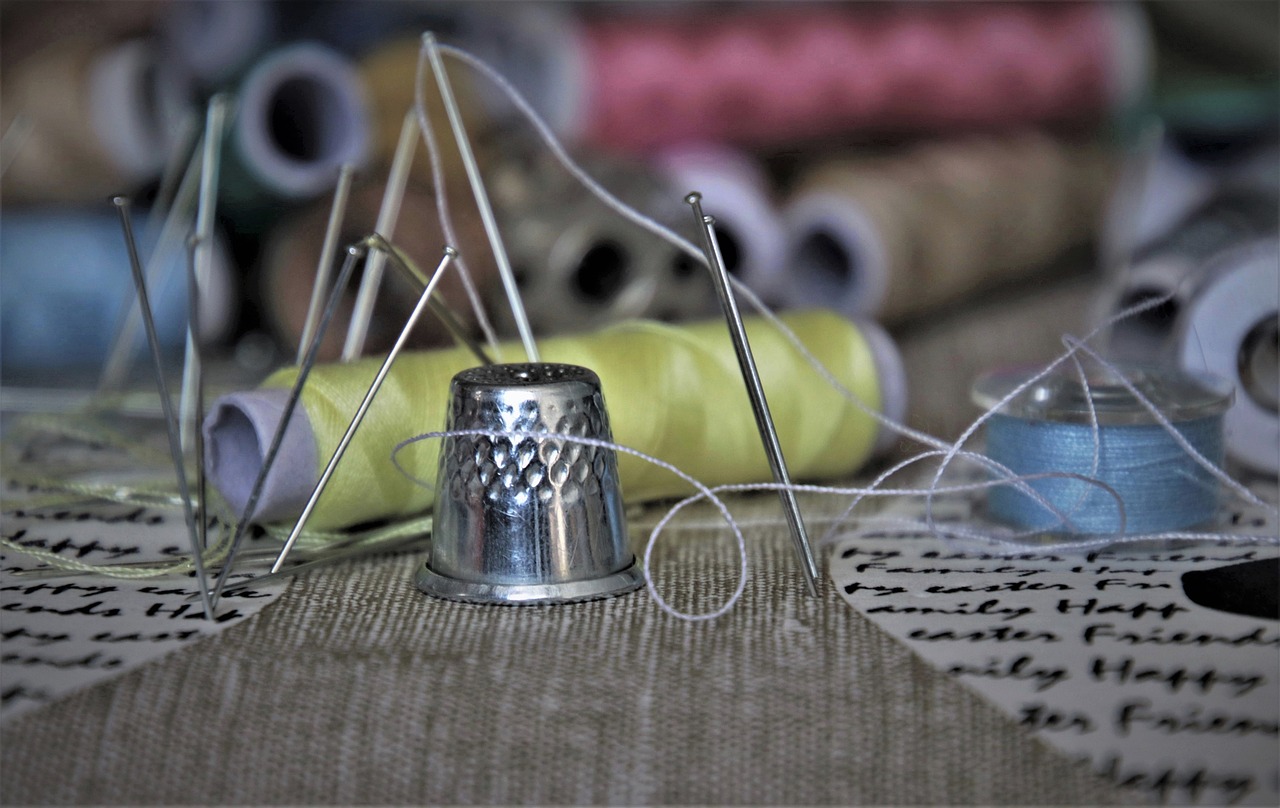
Common Stitching Mistakes
When diving into the world of sewing, it’s easy to get caught up in the excitement of your new projects. However, even the most enthusiastic beginners can fall prey to some common stitching mistakes that can hinder progress and lead to frustration. Understanding these pitfalls is the first step in ensuring a smoother sewing experience. Let’s explore some of the most frequent mistakes and how to avoid them.
One of the most common errors is inconsistent seam allowances. When sewing, it’s crucial to maintain a uniform seam allowance throughout your project. A seam allowance that varies can lead to uneven hems and misaligned pieces. To combat this, use a seam guide or the markings on your sewing machine to keep your seam allowances consistent. It’s a simple step that can make a world of difference in the final look of your project.
Another frequent mistake is not pre-washing your fabric. Many beginners skip this step, thinking it’s unnecessary. However, pre-washing helps to remove any chemicals and shrinkage that may occur after the first wash. Fabrics can change shape or size, which could ruin your carefully crafted garment. So, always remember to give your fabric a good wash before you start cutting and sewing.
Additionally, many new sewists struggle with thread tension. If your stitches are too loose or too tight, it can lead to puckering or fraying. To avoid this, take the time to adjust your thread tension settings according to the fabric you’re using. This adjustment might seem tedious, but it’s essential for achieving professional-looking seams. If you find yourself in a bind, don’t hesitate to consult your sewing machine manual for guidance.
Another common mistake is ignoring the importance of pressing. Many beginners think they can skip this step, but pressing your seams as you go is vital. It helps to flatten seams, making it easier to sew subsequent pieces together. Plus, it gives your finished project a polished look. So, invest in a good iron and make pressing a regular part of your sewing routine.
Lastly, let’s talk about not using enough pins. It may seem tempting to just wing it and hold fabric pieces together with your hands, but this can lead to misalignment and uneven stitching. Using pins or clips can help secure your fabric in place, allowing you to sew with confidence. If you’re unsure about pinning, remember this: more pins mean more precision!
By being aware of these common stitching mistakes, you can save yourself time, frustration, and fabric. Remember, sewing is a journey, and every mistake is an opportunity to learn and improve your skills. Keep these tips in mind as you embark on your sewing adventures, and you’ll be well on your way to creating beautiful, well-constructed projects.
Here are some common questions that new sewists often have:
- What is the best sewing machine for beginners? Look for a machine that is user-friendly, has basic stitches, and is within your budget.
- How do I choose the right fabric? Consider the project you’re working on and the fabric’s weight, texture, and drape.
- Can I sew without a pattern? Absolutely! Many sewists enjoy creating their own designs and experimenting with different styles.

Essential Sewing Projects for Beginners
Embarking on your sewing journey can be both exciting and a little daunting, but fear not! There are numerous essential sewing projects perfect for beginners that will not only help you practice your skills but also boost your confidence. Think of these projects as stepping stones, each one designed to build your abilities while creating something practical and stylish.
One of the best beginner projects is making a tote bag. This project is straightforward and requires minimal materials, making it ideal for anyone just starting out. Plus, you’ll end up with a functional item that’s perfect for grocery shopping or carrying books. You can personalize it with different fabrics or add pockets to give it a unique touch. The process of cutting, sewing, and assembling the bag will teach you valuable techniques, such as handling fabric and mastering straight seams.
Another fantastic project is sewing a pillowcase. This is not only a practical item for your home but also a great way to practice your sewing skills. You’ll learn about measuring, cutting, and sewing straight lines, which are fundamental skills in sewing. Plus, you can choose fun fabrics that match your bedroom decor, making it a delightful way to express your personal style. The satisfaction of completing a pillowcase will motivate you to tackle more complex projects!
If you’re looking for something a bit more challenging, consider making a simple skirt. While it may seem intimidating at first, many beginner-friendly patterns simplify the process. A basic skirt can be made with just a few seams and an elastic waistband, making it a great introduction to garment sewing. As you work on this project, you’ll learn about fitting and working with patterns, which are essential skills for any aspiring sewist.
For those who want to add a bit of flair to their projects, try making a fabric headband. This fun accessory can be customized with different fabrics and embellishments, allowing you to get creative. The best part? It’s a quick project that can be completed in under an hour, giving you instant gratification and a stylish new accessory to wear!
Here’s a quick overview of these essential projects:
| Project | Skills Learned | Materials Needed |
|---|---|---|
| Tote Bag | Cutting, sewing straight seams | Fabric, thread, handles (optional) |
| Pillowcase | Measuring, cutting, sewing | Fabric, thread |
| Simple Skirt | Fitting, working with patterns | Fabric, elastic, thread |
| Fabric Headband | Creative design, quick sewing | Fabric, thread, embellishments (optional) |
As you dive into these projects, remember that sewing is a journey, not a race. Take your time, enjoy the process, and don’t be afraid to make mistakes. Each project you complete will not only enhance your skills but also give you a sense of accomplishment. So grab your sewing machine and let your creativity flow!
Q: What tools do I need to start sewing?
A: To begin sewing, you'll need a sewing machine, fabric scissors, pins, measuring tape, and thread. As you progress, you can add more tools like rotary cutters and seam rippers.
Q: How long does it take to learn to sew?
A: The time it takes to learn to sew varies by individual. With practice, you can become comfortable with basic techniques in a few weeks, while mastering more complex skills may take several months.
Q: Can I sew without a sewing machine?
A: Absolutely! Hand sewing is a valuable skill, and many projects can be completed without a machine. Start with hand stitching to build your confidence.
Q: Where can I find sewing patterns?
A: Sewing patterns can be found in craft stores, online marketplaces, and even free resources on sewing blogs. Many websites offer downloadable patterns for beginners.
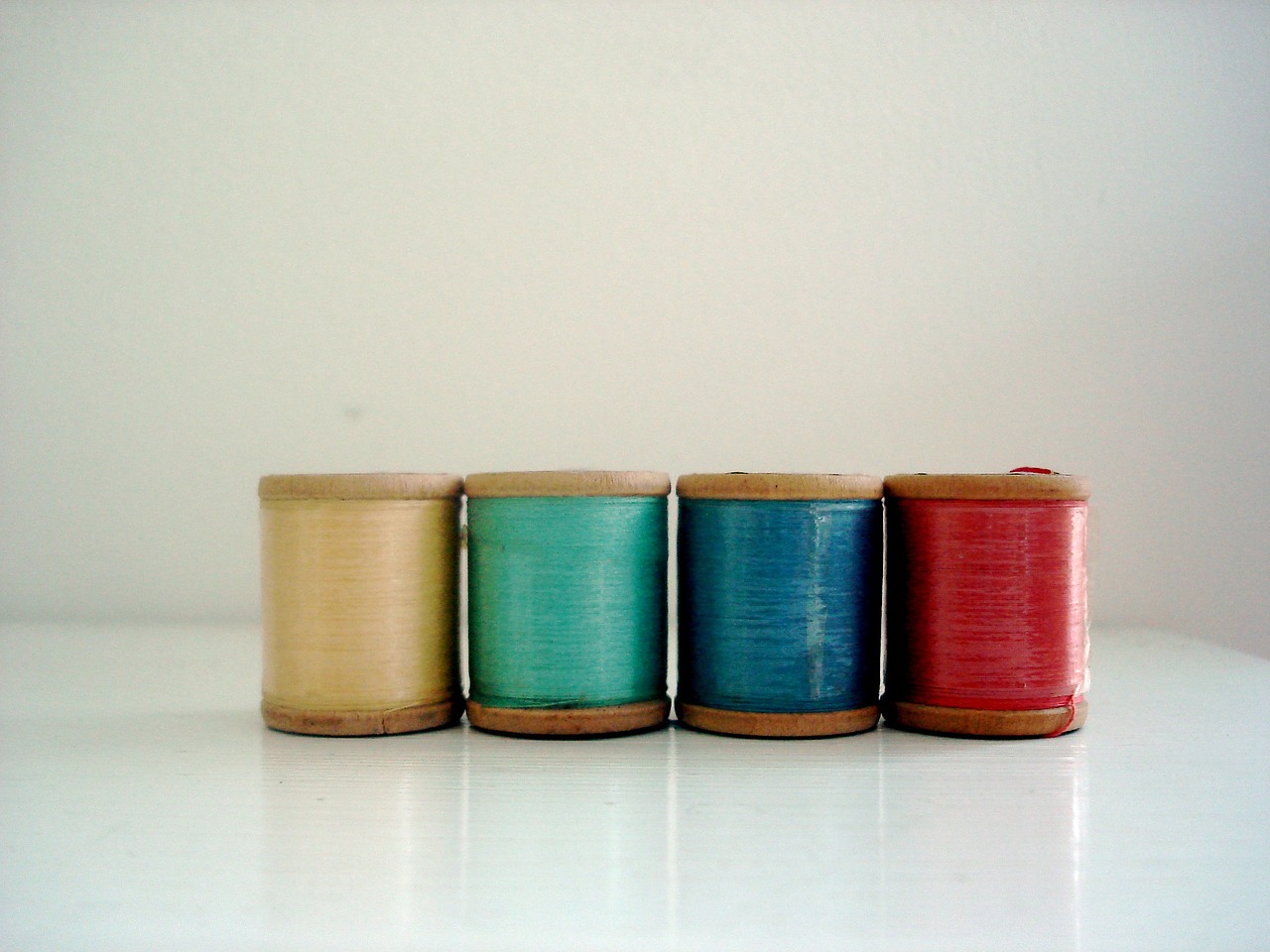
Intermediate Sewing Projects
Once you've mastered the basics of sewing, it's time to roll up your sleeves and tackle some that will not only challenge your skills but also expand your creative horizons. Think of this stage as moving from training wheels to a full-fledged bike ride; it’s exhilarating, and you’ll feel a sense of accomplishment with each project you complete! In this section, we will explore a variety of projects that are perfect for those ready to take the next step, including skirts, simple garments, and even home décor items.
One of the most exciting aspects of intermediate sewing is the ability to experiment with different patterns and techniques. For instance, creating a simple skirt can introduce you to the world of garment sewing, where you will learn about pattern cutting, fitting, and constructing seams. Imagine the satisfaction of wearing something you made yourself! Not only does it boost your confidence, but it also allows you to express your unique style.
Another fantastic project to consider is making a pillow cover with a zipper. This project will teach you about adding closures and working with different fabrics, which can be quite different from the straightforward sewing you've done before. Plus, it’s a great way to spruce up your living space! You can choose vibrant colors or patterns that reflect your personality. Here’s a quick comparison of a few projects you might try:
| Project | Skills Learned | Estimated Time |
|---|---|---|
| Simple Skirt | Pattern Cutting, Fitting, Seam Construction | 2-3 hours |
| Pillow Cover with Zipper | Adding Closures, Working with Zippers, Fabric Handling | 1-2 hours |
| Simple Tote Bag | Bag Construction, Reinforcing Handles, Lining | 1-3 hours |
As you dive into these projects, remember that choosing the right fabric is crucial. Different fabrics have different properties, which can affect the outcome of your sewing. For example, lightweight cotton is perfect for skirts, while canvas or denim works well for tote bags. Understanding fabric types will not only enhance your sewing experience but also ensure your creations last longer.
To help you along the way, here are a few tips for successful sewing on intermediate projects:
- Read the Pattern Instructions Carefully: This can save you time and frustration.
- Take Your Time: Rushing can lead to mistakes, so enjoy the process!
- Practice Makes Perfect: Don’t be afraid to make mistakes; they’re part of the learning process.
In summary, intermediate sewing projects are an exciting way to build upon your foundational skills. With each project, you’ll gain more confidence and develop your unique style. So, gather your materials, pick a project that excites you, and let your creativity flow!
Q: What should I start with for my first intermediate project?
A: A simple skirt or a pillow cover with a zipper are great starting points. They help you learn new techniques without being overly complicated.
Q: How do I choose the right fabric for my project?
A: Consider the project type and its intended use. Lightweight fabrics work well for garments, while sturdier fabrics are better for bags and home décor.
Q: What if I make a mistake?
A: Mistakes are part of the learning process! Take a deep breath, assess what went wrong, and see if you can fix it. If not, don’t hesitate to start over; you’ll learn something new each time.
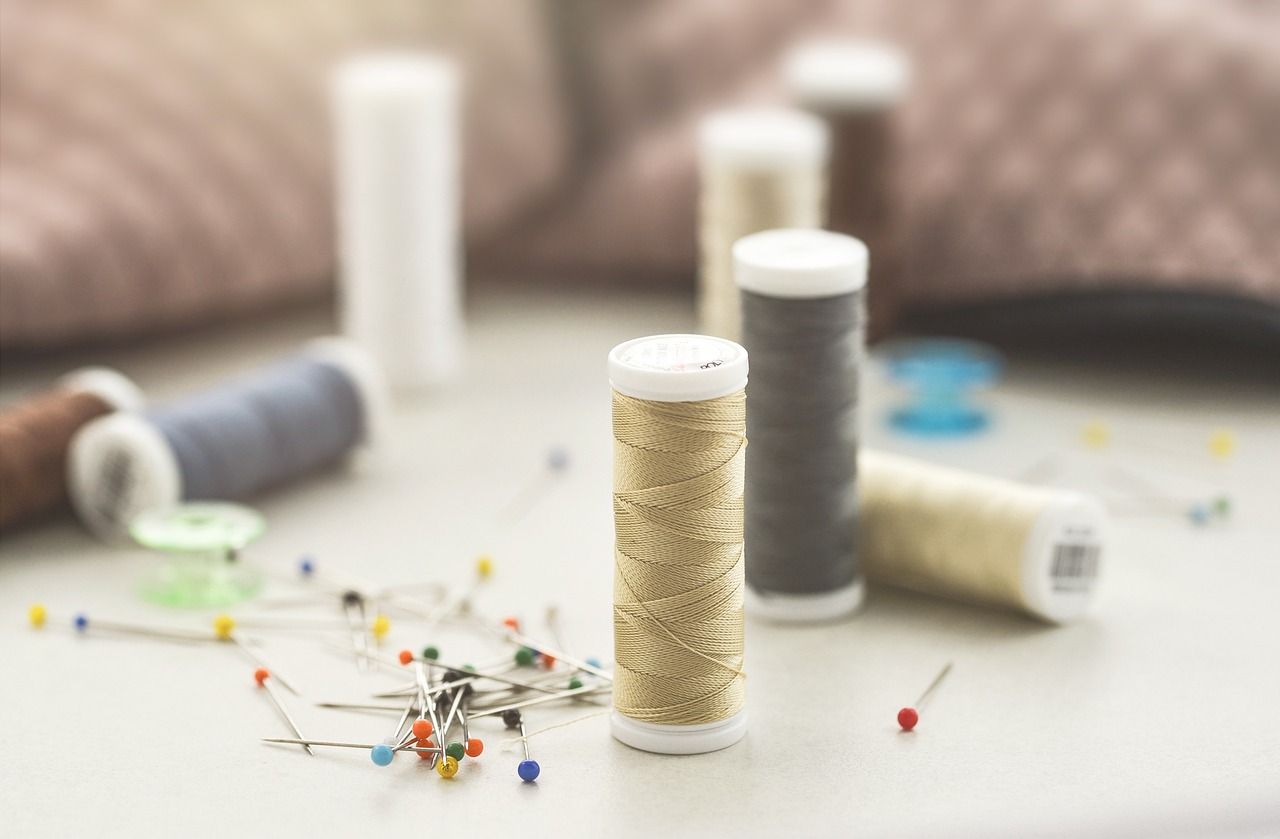
Choosing the Right Fabric
When it comes to sewing, is like picking the perfect ingredients for a delicious recipe. The fabric you select can make or break your project, influencing everything from the drape and texture to the durability and ease of handling. With so many options available, it can feel overwhelming, but don’t worry! We’re here to guide you through the fabric jungle.
First, consider the purpose of your project. Are you making a cozy quilt, a sleek dress, or perhaps a sturdy tote bag? Each project has its own fabric requirements. For instance, if you’re sewing a summer dress, lightweight cotton or linen might be your best bet, while a tote bag would benefit from a heavier canvas or denim. Understanding the function of your item is crucial to selecting the right fabric.
Next, familiarize yourself with the different types of fabrics and their properties. Here’s a quick rundown:
| Fabric Type | Characteristics | Best For |
|---|---|---|
| Cotton | Breathable, easy to sew, comes in various prints | Shirts, dresses, quilts |
| Linen | Lightweight, strong, wrinkles easily | Summer garments, tablecloths |
| Denim | Durable, heavy, comes in various weights | Jeans, jackets, bags |
| Silk | Luxurious, smooth, drapes beautifully | Dresses, blouses, formal wear |
Understanding these characteristics will help you make informed decisions. For example, if you want a fabric that holds its shape well, opt for a stiffer material like denim or canvas. On the other hand, if you’re looking for something flowy and soft, silk or rayon could be your go-to.
Another important factor is the fabric weight. Fabric weight is usually measured in grams per square meter (GSM) or ounces per yard. Lightweight fabrics (like chiffon) are great for layering, while heavier fabrics (like canvas) are perfect for structured items. A good rule of thumb is to match the weight of the fabric to the design of your project. If you’re making a flowing skirt, a light fabric will give you the right movement, while a structured jacket will benefit from a heavier fabric.
Lastly, don’t forget about the color and print. The visual aspect of your fabric can greatly affect the overall look of your finished project. Whether you’re going for bold patterns or subtle hues, make sure the fabric reflects your personal style and the vibe you want to convey. Remember, fabric can be a statement piece or a subtle backdrop, so choose wisely!
In conclusion, choosing the right fabric is a fundamental step in your sewing journey. By considering the purpose, properties, weight, and visual appeal of the fabric, you’ll be well on your way to creating stunning projects that not only look great but also stand the test of time. So, the next time you’re at the fabric store, take a moment to explore your options and let your creativity flow!
- What is the best fabric for beginners?
Lightweight cotton is often recommended for beginners due to its ease of sewing and wide availability. - How do I know if a fabric is suitable for my project?
Consider the fabric's weight, drape, and texture in relation to your project’s design and purpose. - Can I mix different fabric types in one project?
Yes, but be mindful of how different fabrics behave together. Ensure they have similar care instructions to avoid issues later.
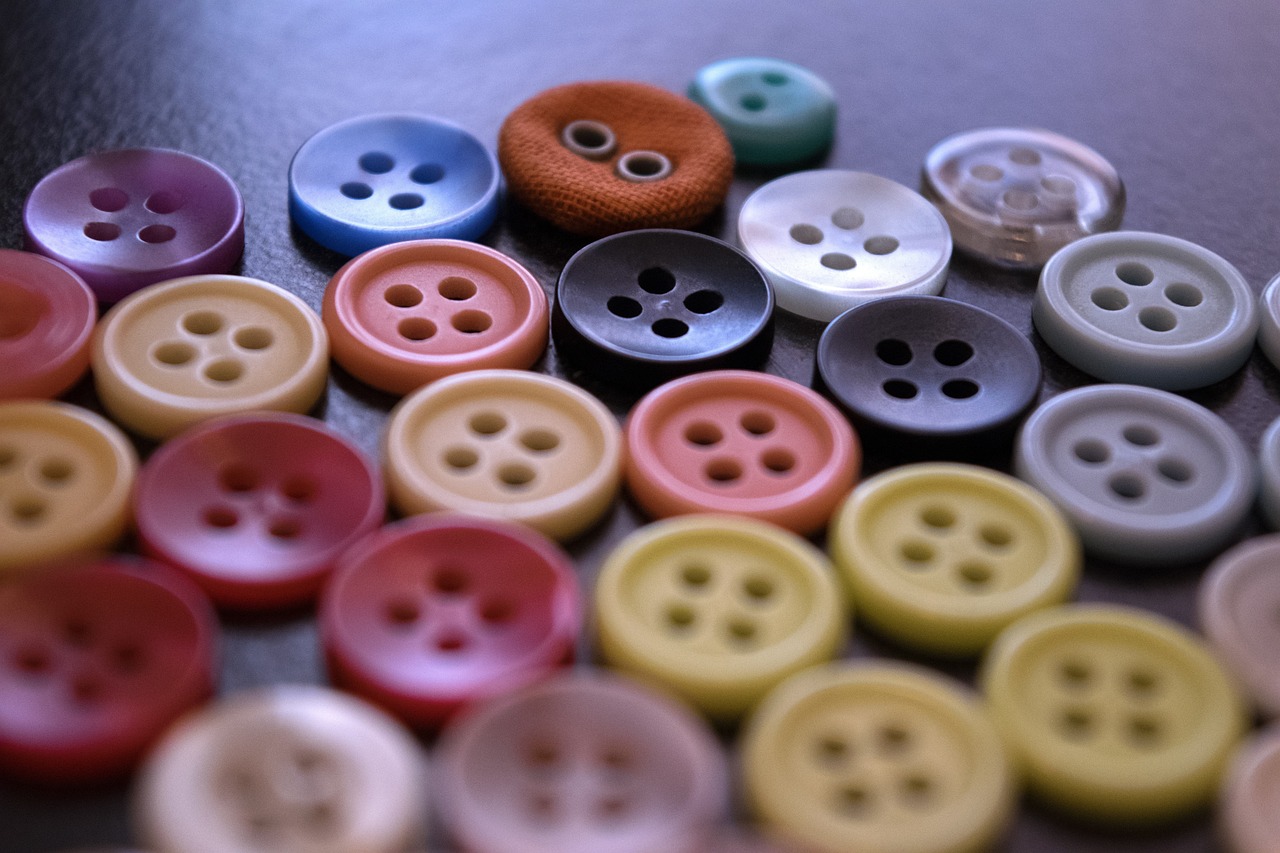
Tips for Successful Sewing
Sewing can be a delightful journey, but like any craft, it comes with its challenges. To ensure your sewing experience is as smooth as possible, here are some essential tips that seasoned sewists swear by. First and foremost, always set up your workspace efficiently. A well-organized area can make a world of difference. Make sure your sewing machine is clean and well-maintained; this not only extends its life but also improves your sewing quality. Just like a chef needs a sharp knife, you need a well-functioning machine!
Another crucial aspect is choosing the right thread. The thread you select can affect the durability and appearance of your project. Always match your thread to the fabric type; for instance, use cotton thread for cotton fabrics and polyester for stretchy materials. This simple step can prevent a multitude of problems down the line. Also, make sure to use the correct needle for the fabric you are working with. A universal needle works for most fabrics, but specialty fabrics may require a specific needle type. Think of it like using the right tool for the job—using a hammer to drive a screw just won’t cut it!
When it comes to cutting fabric, precision is key. Always use sharp scissors or a rotary cutter and a cutting mat for clean edges. Before you cut, take a moment to measure twice, cut once. This age-old adage holds true in sewing as well. Mistakes in cutting can lead to wasted fabric and time, which no one wants! And speaking of fabric, consider pre-washing your fabric before starting your project. This helps to prevent shrinkage later on, ensuring your finished product retains its intended size and shape.
As you sew, remember to keep your seam allowances consistent. This is the space between the edge of the fabric and your stitching line. Most patterns will specify a seam allowance, usually 1/4 inch or 5/8 inch. Using a sewing gauge can help you maintain this consistency. If you’re unsure, practice on scrap fabric first. It’s like warming up before a workout—essential for getting into the right groove!
Lastly, don’t forget to enjoy the process! Sewing is not just about the end product; it’s about the creativity and satisfaction that comes with making something with your own hands. If you encounter a problem, take a deep breath and remember that every mistake is an opportunity to learn. Embrace the journey, and soon you’ll find yourself not just sewing, but creating with confidence.
Here are some common questions that beginners often ask when diving into the world of sewing:
- What sewing machine should I buy as a beginner? Look for a machine that is user-friendly, has a variety of stitches, and comes with good customer support. Brands like Brother and Singer are often recommended.
- How do I choose the right fabric? Consider the project you’re working on. For beginners, cotton is a great choice because it’s easy to work with and forgiving.
- What is the best way to learn sewing? Start with simple projects and tutorials. Online resources, community classes, and sewing groups can also provide valuable support.
Frequently Asked Questions
- What tools do I need to start sewing?
To kick off your sewing journey, you'll need a few essential tools. Start with a sewing machine, fabric scissors, pins, a measuring tape, and a seam ripper. Don’t forget about thread and a selection of fabrics! Think of these tools as your trusty sidekicks in the world of DIY sewing.
- How do I choose the right fabric for my project?
Choosing the right fabric can feel like picking the perfect outfit for a big date! Consider the type of project you're working on. For beginners, cotton is a great choice due to its ease of handling. For more advanced projects, explore fabrics like linen or jersey, which offer unique textures and drapes. Remember, the right fabric can make or break your creation!
- What are some common mistakes beginners make in sewing?
Ah, the classic rookie errors! Beginners often forget to pre-wash their fabric, which can lead to shrinkage later on. Another common mistake is not using the correct stitch length for their project. And let’s not forget about the infamous tangled thread! But don’t worry, everyone makes mistakes; it’s all part of the learning process.
- Is hand stitching better than machine stitching?
It really depends on your project! Hand stitching can be great for delicate work or intricate details, while machine stitching is faster and perfect for larger projects. Think of it like choosing between a fine paintbrush and a roller; each has its place in the art of sewing!
- What are some easy sewing projects for beginners?
If you’re just starting out, consider making a simple tote bag or a pillowcase. These projects are not only easy to tackle but also super useful! They provide a great way to practice your skills without overwhelming yourself. Plus, who doesn’t love a new bag or a cozy pillow?
- How can I improve my sewing skills?
Practice makes perfect! Try to sew a little every day, and don’t shy away from challenging projects as you grow more confident. Joining a sewing group or taking a class can also provide valuable tips and support. Think of it like leveling up in a video game; the more you play, the better you get!



















